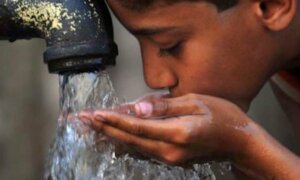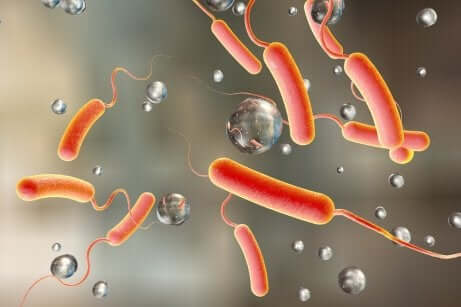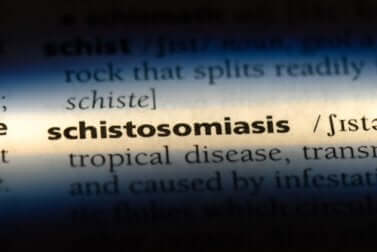Types of Waterborne Diseases


Written and verified by the doctor Leonardo Biolatto
In this world we live in, it’s very difficult for us to imagine that there are places where you can’t get water at the turn of a tap. And, even worse, we tend to forget about the numerous types of waterborne diseases that are transmitted due to poor water quality.
Unfortunately, although we may be unaware of this, about 250,000 people or more die each year due to waterborne diseases. That’s because almost 30% of the world’s population can’t access safe, quality water.
We often talk about clean water shortages and dehydration in places like Africa. However, we tend to forget that this same problem also has indirect consequences, such as infections from contaminated water.
Therefore, in this article, we’ll tell you about the most relevant types of waterborne illnesses. It’s important to be aware of these illnesses so that we can make more efficient use of our water, and do better at conserving it.
What are waterborne diseases?

The presence of microorganisms in these waters causes these illnesses. This, added to the fact that this often occurs in places with insufficient healthcare, ends up being fatal for a large number of people.
The most common water-related illness is diarrhea. Acute diarrhea can be caused by a large variety of microorganisms. The problem in these cases is that, through our stools, we lose even more fluids and electrolytes.
Diarrhea is more serious in children. That’s because it often causes dehydration, which can be life-threatening if not treated quickly. The good news is that we currently have sachets filled with the necessary electrolytes to rehydrate people suffering from this condition. And, they’re trying to distribute them throughout the neediest countries.
Another well-known type of waterborne illness is cholera. This is an infection caused by the Vibrio cholerae bacterium, which has sparked destructive epidemics throughout history. This disease involves severe diarrhea and vomiting. In addition, it can also lead to dehydration and death.
Other types of waterborne diseases
Malaria is a disease that’s transmitted through mosquito bites. However, some people also consider it to be a waterborne illness. That’s because this type of mosquito only lives in areas with stagnant, low-quality water.
In addition, dysentery is another condition associated with contaminated water. This illness causes very aggressive diarrhea, and it mostly affects children. Also, typhus and typhoid fever are very similar. Ingesting contaminated water can cause all of them.
Keep reading: Infectious Diarrhea: Everything You Should Know
Diseases caused by contact with water
Although we tend to only associate these types of illnesses with drinking contaminated water, there’s actually more to it than that. For example, swimming in lakes or rivers with some microorganisms, can cause certain illnesses, like schistosomiasis.

Schistosomiasis is an infection from parasites that enter the body through our skin. It’s common in areas where people bathe themselves, in places like lakes or ponds. The same also happens with trachoma, which is an eye infection from contact with this type of water.
In addition, diseases can come from eating foods that were grown with low-quality water. In fact, it’s very common for certain vegetables that have been watered with fecal water to poison people.
Read more: 3 Carrot Remedies to Treat Diarrhea
Conclusion
There are countless types of waterborne diseases. The biggest problem is that, to this day, we don’t know the severity of the consequences of this global problem. Therefore, it’s very important to be aware of this issue.
We need to make responsible and efficient use of our water. In addition, we have to be careful when traveling to areas where water conditions aren’t as good as they are at home.
All cited sources were thoroughly reviewed by our team to ensure their quality, reliability, currency, and validity. The bibliography of this article was considered reliable and of academic or scientific accuracy.
- Rodríguez Miranda, J. P., García-Ubaque, C. A., & García-Ubaque, J. C. (2016). Enfermedades transmitidas por el agua y saneamiento básico en Colombia Waterborne diseases and basic sanitation in Colombia. Rev. Salud Pública, 18(5), 738–745. https://doi.org/10.15446/rsap.v18n5.54869
- Enfermedades transmitidas por el agua contaminada | Ingredientes que Suman. (n.d.). Retrieved December 11, 2019, from https://blog.oxfamintermon.org/enfermedades-transmitidas-por-el-agua-contaminada/
- OMS | Enfermedades transmitidas por el agua. (2017). WHO.
This text is provided for informational purposes only and does not replace consultation with a professional. If in doubt, consult your specialist.








